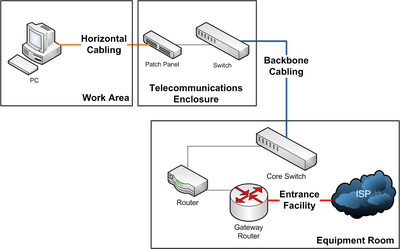
A cellular network or mobile network is a communications network where the last link is wireless. The network is distributed over
land areas called cells, each served by at least one fixed-location transceiver, known as a cell site or base station. In a cellular
network, each cell uses a different set of frequencies from neighboring cells, to avoid interference and provide guaranteed bandwidth
within each cell.
When joined together these cells provide radio coverage over a wide geographic area. This enables a large number of portable
transceivers (e.g., mobile phones, pagers, etc.) to communicate with each other and with fixed transceivers and telephones anywhere
in the network, via base stations, even if some of the transceivers are moving through more than one cell during transmission.
Cellular networks offer a number of desirable features:
More capacity than a single large transmitter, since the same frequency can be used for multiple links as long as they are in
different cells
Mobile devices use less power than with a single transmitter or satellite since the cell towers are closer
Larger coverage area than a single terrestrial transmitter, since additional cell towers can be added indefinitely and are not
limited by the horizon
Major telecommunications providers have deployed voice and data cellular networks over most of the inhabited land area of the Earth.
This allows mobile phones and mobile computing devices to be connected to the public switched telephone network and public Internet.
Private cellular networks can be used for research or for large organizations and fleets, such as dispatch for local public safety agencies or a taxicab company.
https://en.wikipedia.org/wiki/Cellular_network








